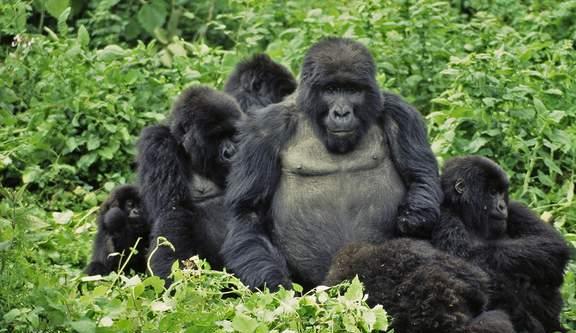Home » Environment, North America, World » Infanticide in the animal kingdom, why do males kill their cubs, and how do females respond?
One thing that seems cruel in the animal world is infanticide, the killing of young. Lions, gorillas, chimpanzees, hippos, dolphins, and many other animals exhibit this behavior. Many articles have been written about the reasons why animals kill their young. To sum up, there are mainly two aspects.
One is for reproduction, that is, to allow the female to re-enter the mating state, so it mostly occurs in animal groups with more than one male. Because once a female animal is pregnant, it will have a long pregnancy and lactation period. During this time, males cannot mate with females. For example, gorillas cannot mate for 2 to 4 years after giving birth. To meet demand, males will kill females’ young to restore them to a state where they can mate and reproduce again.
If the alpha male is replaced in a polygamous society, cub killings will also increase, because the new alpha male desperately needs to establish himself in the group, and mating with the females in the group is one thing, they must be in a limited time They finish mating with the female members of the pack during their tenure, so they can’t wait to kill the cubs left by the previous leader.
Secondly, for the sake of future generations, that is to ensure that the cubs in the group are all their own blood.
Let’s take the example of a lion. When the males in the pride are challenged and defeated, new males start the kill. He will find and kill the lion cubs that were well protected by the lioness, because these cubs are all children of “predecessors” without exception. When they grow up, they are a threat to themselves and their offspring.
In the capuchin monkey population, in order to avoid their offspring being challenged when they inherit the status of Monkey King in the future, males prefer to kill the male cubs left by the “predecessors” and directly kill future competitors.
Although both males and females have the behavior of killing cubs, for example, female mice will kill the offspring of their companions in order to allow their children to be fed more (for some reason, the companions are also willing to feed the offspring of their companions) there is hatred for killing mice ), but the most common “murderers” were men. Of course, a woman in this situation does not allow it to develop indifferently. They have also evolved some coping methods, such as female cooperation, such as changes in mating habits.
The most representative of women’s cooperation is the lion. A pride usually has 4 to 5 lionesses. They play hunting, breeding and caretaker roles in the group. When the cubs are killed, these lionesses sometimes gang up against the male lions to make a living for their own cubs.
Changes in mating habits, most notably bonobos. Bonobos have a bad reputation for mating, as if they do it all the time.
But the behavior of this group of bonobos, on the one hand, eases the conflict between each other, on the other hand, it also makes it impossible for them to judge who the father of the young bonobos is, not to mention that male bonobos can’t tell the difference, and female bonobos can’t tell the difference. Can be confused, so there will be no infanticide, because it is not good to accidentally hurt your own child.
Some people may ask, isn’t the reason why species exist is for the continuation of the population? Cubs are killed again and again, is population reproduction not a problem? In fact, for example, one of the reasons gorillas are endangered is that many young gorillas don’t live past the age of 3 because males kill their young.
However, this is actually a matter of population reproduction and the continuation of individual genes. For a species, individual viability is more important, and its continuation means producing more offspring with its genes, causing the behavior to be “worth doing” for them.
Please wait…
RELATED ARTICLES
Did you like this information? Then please consider making a donation or subscribing to our Newsletter.
Related posts:
Views: 0
 RSS Feed
RSS Feed

















 July 4th, 2023
July 4th, 2023  Awake Goy
Awake Goy 

 Posted in
Posted in  Tags:
Tags: 
















